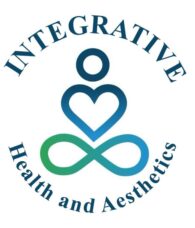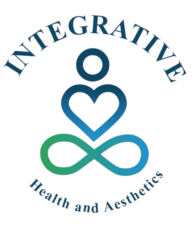Rosacea is a common, chronic skin condition that affects up to 10 percent of the population, although many people are unaware that they have it. It can cause flushing or long-term redness on your face. It also may cause enlarged blood vessels and small, pus-filled bumps. Some symptoms may flare for weeks to months and then go away for a while. Rosacea typically affects fair-skinned women between 30 and 60 years of age. It can first appear during menopause and is more prevalent in people with a family history of the condition. Although rosacea is a chronic condition that cannot be cured, there are several treatments available to relieve its symptoms and prevent flareups.
Symptoms
Symptoms of rosacea are usually visible on the nose, cheeks, mouth and forehead; they occasionally spread to the neck, chest, scalp or ears. Symptoms typically come and go, flaring up for weeks or months, and then fading for a period of time. They tend to worsen as the condition progresses, and are sometimes used to distinguish its four stages.
Pre-rosacea symptoms include frequent flushing or blushing, which progresses to a persistent redness on the face. Vascular rosacea symptoms involve the swelling of small blood vessels (commonly referred to as spider veins and, medically, as telangiectasia) around the nose and cheeks. Oily skin and dandruff are also common during this phase. Inflammatory rosacea is the stage during which small bumps or pustules begin to develop; they then spread across the nose, cheeks, forehead and chin. Late rosacea is the most advanced phase, during which all earlier symptoms intensify.
If left untreated, symptoms continue to worsen and may cause permanent skin damage. Some patients develop a form of the disorder that affects the eyes (ocular rosacea), and which may, in severe cases, affect vision.
Symptoms of rosacea include:
- Facial redness and flushing: Rosacea can make your face flush more easily. Over time, you may notice that your face stays red. Depending on skin color, redness may be subtle or look more pink or purple.
- Visible veins: Small blood vessels of the nose and cheeks break and become larger. These are also called spider veins. They may be subtle and hard to see, depending on skin color.
- Swollen bumps: Many people with rosacea develop pimples on the face that look like acne. These bumps sometimes contain pus. They also may appear on the chest and back.
- Burning sensation: The skin of the affected area may feel hot and tender.
- Eye problems: Many people with rosacea also have dry, irritated, swollen eyes and eyelids. This is known as ocular rosacea. Eye symptoms may show up before, after or at the same time as skin symptoms.
- Enlarged nose: Over time, rosacea can thicken the skin on the nose, causing the nose to look bigger. This condition also is called rhinophyma. It occurs more often in men than in women.
Triggers of Rosacea Symptoms
Rosacea symptoms, which tend to worsen periodically, can be triggered by the following:
- Hot or spicy food or drink
- Alcoholic beverages
- Extreme temperatures
- Hot baths or saunas
- Sunlight
- Anger, embarrassment or stress
- Strenuous exercise
- Medications that dilate blood vessels
- Corticosteroids (such as prednisone)
Although the specific causes of rosacea are unknown, a combination of hereditary and environmental factors appears to be involved.
Diagnosis and Treatment of Rosacea
Diagnosis of rosacea is typically made through a simple physical examination of the skin on the face. Sometimes tests are administered to rule out other possible causes, such as eczema or lupus. Although there is no cure for rosacea, several treatments are available to relieve symptoms. Through medical consultation, patients should be able to pinpoint at least some of their symptoms' triggers and learn to avoid them. It may be necessary for them to avoid the sun, spicy foods, alcoholic beverages, or certain medications. Participation in a stress-management program may also be recommended.
Medical treatments, the use of which depends on the severity of the condition, may include the following:
- Topical ointments
- Acne medications
- Laser therapy can aid decreasing facial redness, flushing and also in removing visible veins (telangiectasia).
If the patient is suffering from symptoms of ocular rosacea, oral antibiotics and steroid eye drops may be prescribed.
To learn more about Rosacea, and the treatment options available specifically and customized for you, schedule a skin care consultation today.


